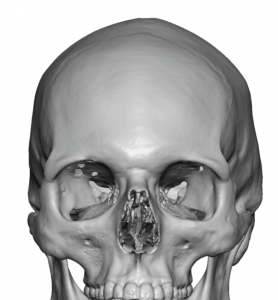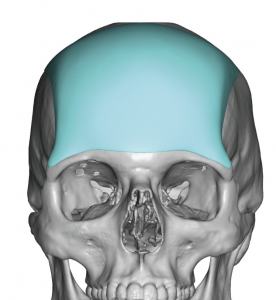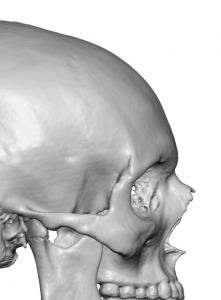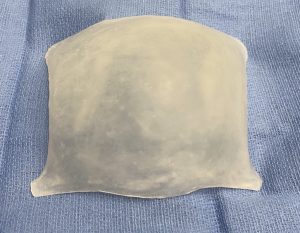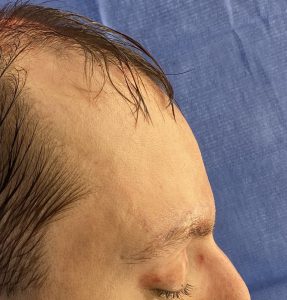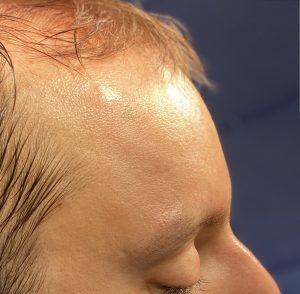Background: One of the features of the male forehead is that it has a more backward slope than that of a female. How much of a backward slope that is acceptable is a matter of personal preference. But the location of the frontal hairline can influence the appearance of the forehead slope in profile. The more recessive the frontal hairline is the greater the slope of the forehead will appear as it exposes more of the front part of the top of the skull.
Going further back in the midline from the top of the forehead is the sagittal suture line. This suture line continues backward from the forehead at the bicoronal suture line with a slight convexity until it reaches the crown at the back of the head. In some recessed foreheads the sagittal crest is elevated due to early premature sutural fusion. This is not a true sagittal craniosynostosis but a very minor version of it. A slightly prominent sagittal crest can appear as the forehead/top of the skull slopes backward in profile. The combination of a sloped forehead with a high posterior sagittal crest goes the head shape an unfavorable appearance in profile.
Treating both a high sagittal crest and doing a forehead augmentation through the same small scalp incision is possible. Obviously this could be easily done through a long coronal scalp incision but this is aesthetically unacceptable in a male.
Case Study: This male desired to improve the backward slope of his forehead without making it excessively prominent. At the same time he also wanted a raised sagittal crest reduced.
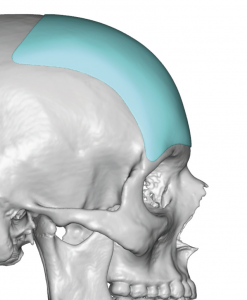
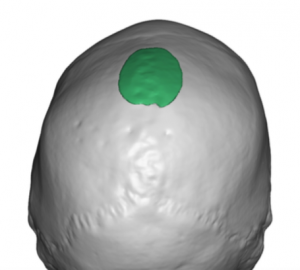
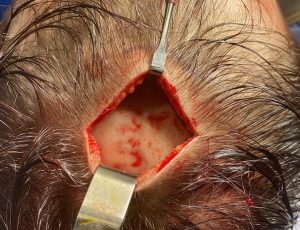
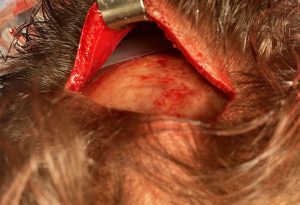
The change in his forehead slope could be seen in profile immediately after the insertion of the implant.
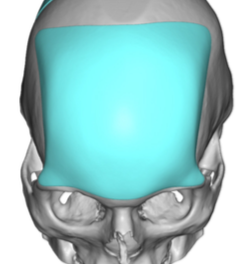
Case Highlights:
1) One reason men seek forehead augmentation is to decrease a backward slope and make it a bit wider.
2) A high sagittal crest raises the height of the head and can make some contribution to the appearance of the slope of the forehead in profile view.
3) The combination of sagittal crest reduction and the placement of a custom forehead implant can be done through the same small scalp incision on the top of the head.
Dr. Barry Eppley
Indianapolis, Indiana




